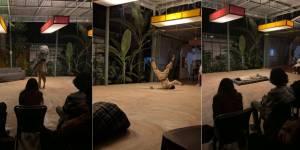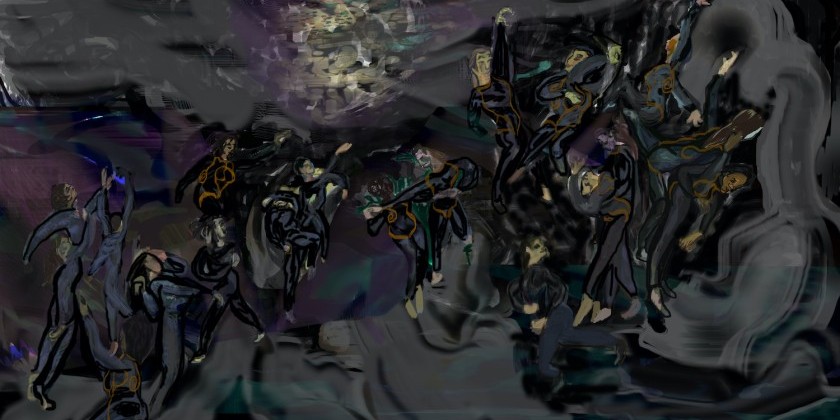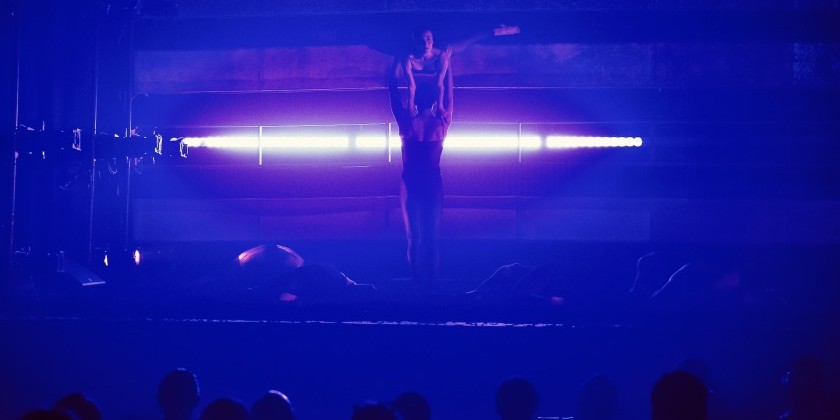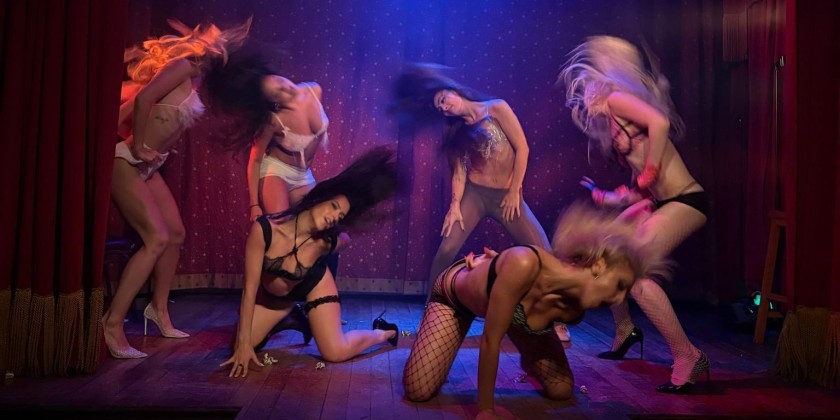AUDIENCE REVIEW: Pina Bausch Tanztheater Wuppertal
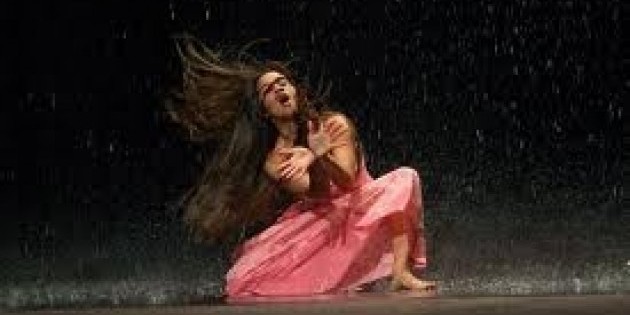
Company:
Pina Bausch Tanztheater Wuppertal
Performance Date:
10/23/2012
Company / Show / Event
Pina Bausch Tanztheater Wuppertal
Performance Date
10/23/2012
Venue / Location
BAM-Brooklyn Academy of Music
Freeform Review:
PINA’S MUSICAL SECRET
How I can talk about Pina's last show?
Her dancers and her work are like family members for me.
I say this because I know at least 70% of her repertory from either live performance or video.
…como un musguito en la piedra, ay, si, si, si… (like moss on a stone) was the last show Pina choreographed before she died in 2009, premiering on June 12, in Wuppertal of the same year. Her musical choices awakened my ears and my thoughts more than ever before (I am Argentinean, and this piece was conceived in neighboring Chile).
Hearing famous traditional songs evoked a different echo inside myself. The stunning solo of the dancer Fernando Suels Mendoza in the second part of the show is the inspiration for this article and worth analyzing in depth, plus the fact that I am teaching a college choreography class where I have prohibited the use of any music for my students as an exercise to discover and understand the power of dance as a language.
Mendoza 's solo started when a projection of a small waterfall fully invades the stage, making him look like a cut-out figure inside a yellow pool of light. Cha, Digo, a nostalgic milonga (a rhythm in Argentinean folk) sung by Daniel Melingo with his sandpaper voice introduces strong context and ambiance. How does one balance the imposing superficial lyrics in this song when there is powerful movement and visual effects at the same time?Words are specific, movement is subjective.
As an audience member, there is a choice to make, and it is like someone massaging you when to are eating a piece of steak while smelling roses at the same time.
I remember my choreography teacher Mary Anthony talking about using music without lyrics, because words are your direct intellectual competitor.
What about when the lyrics are in a foreign language for that audience? Alternately, what is the effect if the lyrics and audience speak the same language?
My husband (an artist, photographer) is even a Spanish speaker, and made the conscious decision to forget about the interfering lyrics and concentrate on the movement. I could not. This solo is tattooed in my mind visually, but the lyrics in the milonga confused me, I did not want to hear the song and focus on the surreal and poetic metaphors of movement.
The transitions either fade out or end abruptly. As a choreographer it is very difficult to construct transitions between widely diverse moods and music styles like the ones Pina chose. Most of the solos or duos end by evaporating in the air as the music fades.
My cultural background was intricately tied to this issue, and the lyrics of Violeta Parra, Victor Jara, Chico Trujillo and Daniel Melingo imposed themselves into the dance. The strong images evoked in Violeta Parra's lyrics in Volver a Los 17 compete with the dance soloist; both have the same mood. Like husband and wife, music and dance share the same bed but are two different people choosing to live together.
Pina's music collaborators are Matthias Burkert, who has collaborated with her since 1979, and Andreas Eisenschneider since 1995.
In her work, the music collage is either a soft breeze or a hurricane. The writer Norbert Servos describes Pina’s collaborative music selection process and methodology:
- The dances and scenes almost always emerged independently of the music, thus developing and affirming their self-sufficiency – amongst other things. The music was chosen partly as a result of considerations made at the start, but largely through a dogged process of trial and error, which was not only the guiding working principle; it determined the content of each piece.
- Critical in making the final selection, Bausch says, is whether in twenty years they will still look forward to the next track each time, that it will always sound fresh and new.
- Eisenschneider said "The music is the secret." It creates a scenic bracket, and intensifies the emotional content of each scene. From jazz, soul, world music through classical to heavy metal - anything is possible. A decision is only made when the music has been tried with a dance or action. Many attempts are necessary.
- Music was often used for the first time at the dress rehearsal - and sometimes particular pieces only made sense in the cultural environment of a particular country, creating a wholly different effect elsewhere. Hopes for a musical solution were continually dashed for this reason, and the search had to continue till a universal solution was found.
- The music also had to fulfill a double role; it had to be strong and memorable, and at the same time remain subservient. Some pieces failed to pass muster because they dominated events on stage.
- Mathias Burkert says "...the trick was to allow the musical spirit of a country to be heard, without it sounding folkloristic".
Perhaps it was the provocative lyrics that stole the show, so the question I ask myself is: use music with lyrics or without lyrics?
John Martin, in his book Modern Dance, enumerated some of the relationships between music and dance.
- Music interpretation: This is a contradictory formula, how can a dancer interpret Bach or Beethoven? The composer expresses himself sufficiently in musical form, not needing a dancing or gestural commentary. The dancer's intention is to translate his own emotion, his own personal reaction to a determinate music. Another choice is interpreting the content of the music.
- Transposition: visualize merely its form, translating sound patterns into movement patterns. The most tragic experience was Rite of Spring by Nijinsky, applying eurhythmics from Jacques Dalcroze. Nijinsky divided the dancers in groups representing the different instruments of the orchestra and attributed a corresponding movement to each note.
- Contrapuntal background: placing movement patterns against music patterns. This is a compromise between interpretative and transposition. The music is the background and the movements are a visual counterpoint.
- Music should merely mark the tempo and phrasing of what a choreographer wants to do using ready-made music or a specially make composition.
- Mary Wigman, a German dancer, choreographer and notable as the pioneer of expressionist dance, proposed that the solution to this problem was that the music must be created at the same time as the dance, in a mutual collaboration between choreographer and composer. To respect the specificity of dance, the music must be born from live movements like the dance.
The dry desert of Atacama inspired the set by Peter Pabst with his bare landscape. He exalts the emptiness where the bodies move and the materialization of the space is heavily influenced by the sound choices, whether music, spoken word or breath, unleashing emotional energy.
Pina' s work is like an ecstatic manifestation of life.
Thanks for your inspiration, amazing legacy and contribution to dance history.




